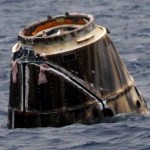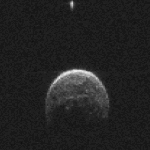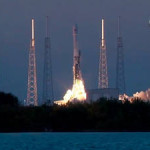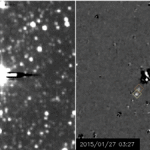First Images of Comet P67 From Philae Lander
Philae, the first probe that humans have ever landed on a comet, is already sending back images from its journey.
Here’s the first shot, taken by Philae from about 1.8 miles above the comet surface and seconds before touchdown, with it’s ROLIS instrument. ROLIS is a downward-facing camera that was tasked to take images of the comet as Philae descended.
These shots came in Wednesday, Nov. 12, a history-making day for humans in space, and the culmination of a 10-year project that has already taught us much about our solar system.
Ten years ago, the European Space Agency launched the Rosetta spacecraft to intercept a comet named 67P/Churyumox-Gerasimenko. For the last decade it has approached, orbited, smelled, and studied the comet, taking thousands of mind-blowing images along the way.
During all this time it’s been carrying some very precious cargo inside called the Philae lander.
Philae was supposed to harpoon the comet when it landed, which would have secured the tiny space probe to the spinning comet’s surface. But something went wrong and the lander is currently hanging on to the surface but entirely secured.
Philae will have enough battery power, scientists suspect, to obtain data for about two-and-a-half days after landing. During that time it will collect data from the surface to study the comet’s composition.
Comets, like 67P/Churyumox-Gerasimenko, could have supplied Earth with water that was essential for life. Discovering how the solar system evolved, including life on Earth, is one of the goals of the Rosetta mission.






